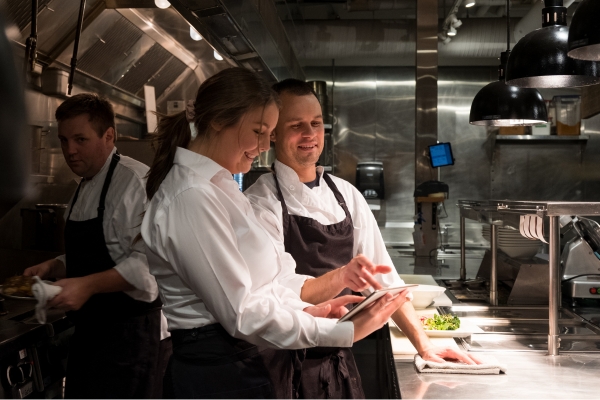April 02, 2025

Running a restaurant isn’t only about serving great food—it’s about making smart financial decisions. While you likely budget for labor and food costs, hidden expenses can quietly creep into your profits. The good news? Strategic planning and slight adjustments can turn hidden costs into savings and efficiency opportunities.
What are Hidden Costs for Restaurants?
Hidden costs in a restaurant aren’t only one-time expenses. Even with the most stringent financial planning, unexpected costs can sneak under the radar, from equipment maintenance to inventory loss and energy waste. Anticipating these expenses will improve efficiency and boost your bottom line.
3 Common Hidden Costs and Money-Saving Solutions
Running a restaurant isn’t always easy, and unexpected costs can quickly eat into your profits. The good news? With the right strategies, you can cut unnecessary costs while maintaining a high-quality dining experience. Here are three common hidden costs—and smart solutions to help you save.
1. Equipment Maintenance
Commercial kitchen appliances—such as ovens, dishwashers, walk-in refrigerators, and ice makers—are significant investments. When budgeting for these essential tools, don’t overlook the ongoing costs of upkeep to ensure they function efficiently and last as long as possible.
- Professional Maintenance Costs: Appliances should be serviced at least once or twice yearly to prevent expensive repairs. Stick to manufacturer-recommended maintenance schedules to avoid malfunctions and disruptions in operations. Build a financial projection that includes a professional inspection.
- Routine In-House Maintenance: Many maintenance tasks can and should be handled internally. Establishing a structured cleaning and upkeep schedule—dividing tasks into daily, weekly, and monthly routines—helps extend equipment lifespan and maintain peak performance. However, account for the additional labor and cleaning supply costs required to complete these tasks, ensuring they don’t become overlooked expenses.
- Budget for Replacements: Even with the best care, equipment has a finite lifespan. Factor in replacement costs for key appliances every few years so you aren’t caught off guard when something needs replacing.
2. Inventory Loss
It’s a given that a restaurant's inventory on opening day will not be the same a few months later. Diningware breakage, damaged linens, and missing silverware are realities. Preparing for the unknown ahead of time means being financially ready for inventory replacement costs when they occur.
- Glassware & Dishware: Track breakage and budget for replacement rates per quarter. Invest in durable materials when possible and train staff on proper handling to minimize losses.
- Linens and uniforms: Invest in stain-resistant fabrics and budget for replacements every six months. Regular laundering and proper care can help extend their lifespan. Calculate replacement needs based on usage and budget for semi-annual restocking.
- Flatware: Regularly check inventory and keep a surplus to avoid last-minute purchases. Although missing utensils might seem small, they add up over time and create unnecessary expenses. Keeping magnetic lids on your trash cans can help minimize losses and will save money in disposed flatware over time.
Regular expense tracking and periodic audits will help refine cost predictions and prevent financial surprises. Setting aside a reserve fund covering 3-6 months of operating costs can help handle unexpected losses smoothly.
3. Energy Waste
Restaurants use a lot of energy, from refrigeration to cooking equipment to heating and cooling, making utility costs unpredictable. Being mindful of energy use and implementing simple changes can help cut unnecessary expenses, leading to big savings over time.
- Upgrade to Water-Saving Fixtures: Low-flow faucets and toilets and Energy Star-rated appliances can reduce water waste and lower operational costs by 11 percent.
- Invest in Smart Energy Management. Programmable thermostats and energy-efficient appliances help control usage and costs. When possible, turn off or reduce power to equipment during off-hours.
- Look Into Renewable Energy: Solar panels and other sustainable options can provide tax benefits and long-term savings. Some utility companies even offer rebates for energy-efficient upgrades.
Smart Business Solutions from CHEF’STORE
Since 1955, CHEF’STORE has been a trusted partner for the culinary community, offering quality ingredients, equipment, and supplies at competitive prices. Explore our business resources to find even more ways to cut costs and run your restaurant efficiently.